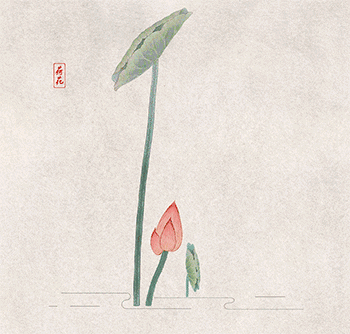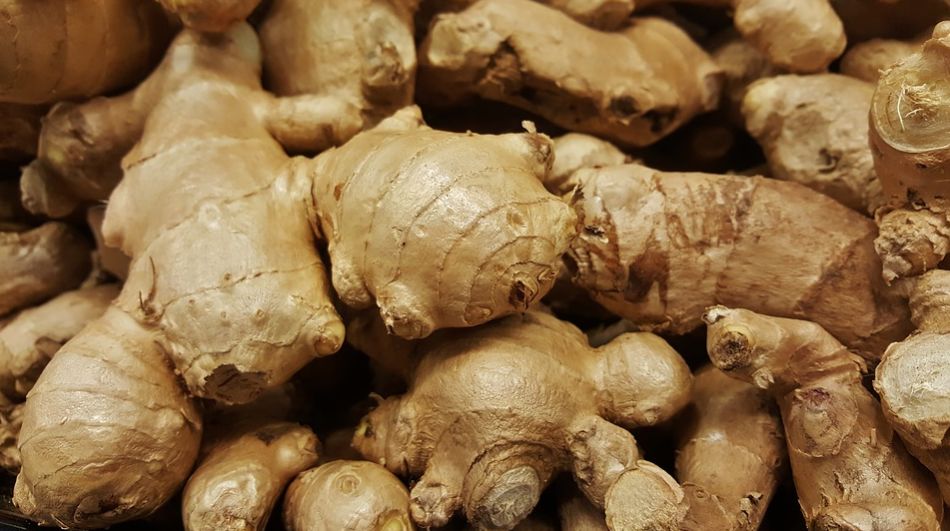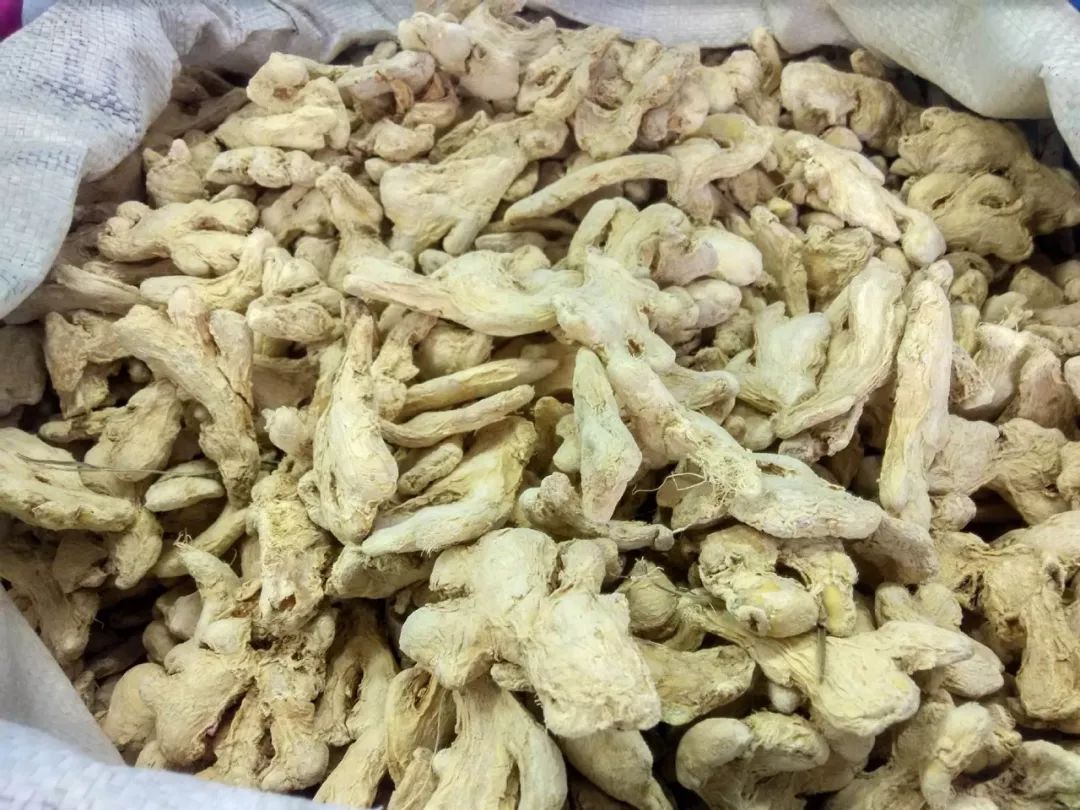
Click the blue text to follow us!

Ginger is both a common food and a widely used medicinal herb, with varieties including fresh ginger (sheng jiang), dried ginger (gan jiang), and high-quality ginger (gao liang jiang). Fresh ginger is commonly found in markets, while dried ginger is typically found in pharmacies. However, in traditional Chinese medicine (TCM) formulas, fresh ginger and dried ginger are often used together.


 Differences Between Fresh Ginger and Dried Ginger
Differences Between Fresh Ginger and Dried Ginger
Fresh ginger is the fresh rhizome of the ginger plant (Zingiber officinale), while dried ginger is the dried rhizome of the same plant. However, if fresh ginger is stored for a long time, it can only become dried fresh ginger (gan sheng jiang) and cannot turn into dried ginger (gan jiang). Since the time of Tao Hongjing, it has been believed that dried fresh ginger can only be referred to as gan sheng jiang, not gan jiang. Li Shizhen also listed dried ginger alongside fresh ginger and dried fresh ginger as three different medicinal materials in the “Compendium of Materia Medica”.

The above image is sourced from: www.pixabay.com
During the cultivation of fresh ginger, the soil must be continuously piled up to cover it, so its medicinal part, the rhizome, grows in the dark underground. The plant’s stem has phototropism, and the fresh ginger rhizome also grows continuously. By summer and autumn, the rhizome becomes very long and tender. Fresh ginger has very little fiber, is tender and crisp, making it very suitable for culinary use. In contrast, dried ginger does not require soil covering during cultivation; its rhizome is exposed to the surface, allowing its internal components to accumulate continuously. Because fresh ginger grows quickly, its internal components do not accumulate sufficiently, resulting in a very light weight and wrinkled surface when dried, making it unsuitable for use as dried ginger. Dried ginger, on the other hand, has rich internal components, and after drying, it does not shrink much in volume and has a heavy texture. Modern pharmacological studies show that the chemical components of fresh ginger and dried ginger are not completely the same, and the proportions of the same components also differ.

 Differences in Medicinal Properties Between Fresh Ginger and Dried Ginger
Differences in Medicinal Properties Between Fresh Ginger and Dried Ginger
Fresh Ginger has a pungent taste, is warm in nature, and belongs to the lung (fei), stomach (wei), and spleen (pi) meridians. It has the effects of releasing the exterior to dispel cold, warming the middle to stop vomiting, warming the lungs to stop coughing, and detoxifying. Fresh ginger’s dispersing power is not strong, and it is generally used for mild colds as an auxiliary medicine for wind-cold colds. It can be used alone with brown sugar to make a decoction for hot consumption to prevent wind-cold colds. Additionally, fresh ginger has the ability to harmonize and descend stomach qi, and stop vomiting, making it particularly suitable for vomiting due to cold in the stomach. However, through compatibility with other herbs, it can treat vomiting caused by various reasons, earning it the reputation of being a sacred medicine for vomiting. Fresh ginger is often used with Ban Xia (Pinellia ternata) to enhance its ability to harmonize and stop vomiting, as seen in the “Minor Bupleurum Decoction” from the “Golden Chamber”. Fresh ginger can also warm the lungs and stop coughing, applicable for coughs due to both external wind-cold and chronic lung cold. Furthermore, fresh ginger can detoxify and treat symptoms such as vomiting, abdominal pain, and diarrhea caused by food poisoning from fish and crabs, often used in combination with Zi Su (Perilla frutescens). It can also treat mild poisoning from Ban Xia and Tian Nan Xing (Arisaema) causing numbness of the throat and tongue, either by decocting fresh ginger or extracting its natural juice for consumption, both of which are effective.

The above image is sourced from the internet
Dried Ginger has a pungent taste, is hot in nature, and belongs to the spleen (pi), stomach (wei), kidney (shen), heart (xin), and lung (fei) meridians. It has the effects of warming the middle to dispel cold, returning yang to open the meridians, and warming the lungs to transform phlegm. Dried ginger’s hot nature helps to warm the middle and dispel cold, assisting the yang qi of the spleen and stomach. Therefore, it can be used for both external cold invasion and internal cold due to deficiency of yang qi. For mild cases, it can be used alone, but in clinical practice, it is often combined into formulas, commonly paired with Gao Liang Jiang (Alpinia officinarum) to enhance the warming and dispelling cold effects. Dried ginger can also return yang to open the meridians, benefiting the spleen, kidney, and heart meridians, which can invigorate the yang qi of these three meridians, treating symptoms such as cold limbs and weak pulse due to loss of yang. It is often used with Fu Zi (Aconitum) to enhance the effect of returning yang and rescuing from collapse while reducing the toxicity of Fu Zi, as seen in the “Four Reverse Decoction” and “Dried Ginger and Aconite Decoction” from the “Treatise on Cold Damage”. Additionally, dried ginger can warm the lungs, dispel cold, and transform phlegm, often combined with Xi Xin (Asarum) and Ma Huang (Ephedra) to enhance its medicinal power, as seen in the “Minor Green Dragon Decoction” and “Ginger, Licorice, and Five Flavor Decoction” from the “Golden Chamber”. In summary, fresh ginger is primarily dispersing; dried ginger focuses on warming.

Public Account Statement
The “Gastroenterology Department of the Beijing Hospital of Traditional Chinese Medicine” WeChat public account is a public welfare platform aimed at popularizing health and wellness knowledge for patients. If there are any inappropriate content or illustrations in this article, please contact us promptly, and we will address it immediately. Thank you for your efforts in public welfare!
Text: Yang Min
Editor: Pan Yuyan
Reviewer: Shi Haixia
Thank you for your attention
If you found this article helpful, feel free to share and like it below. Thank you for your support of health initiatives; your encouragement is our motivation!

